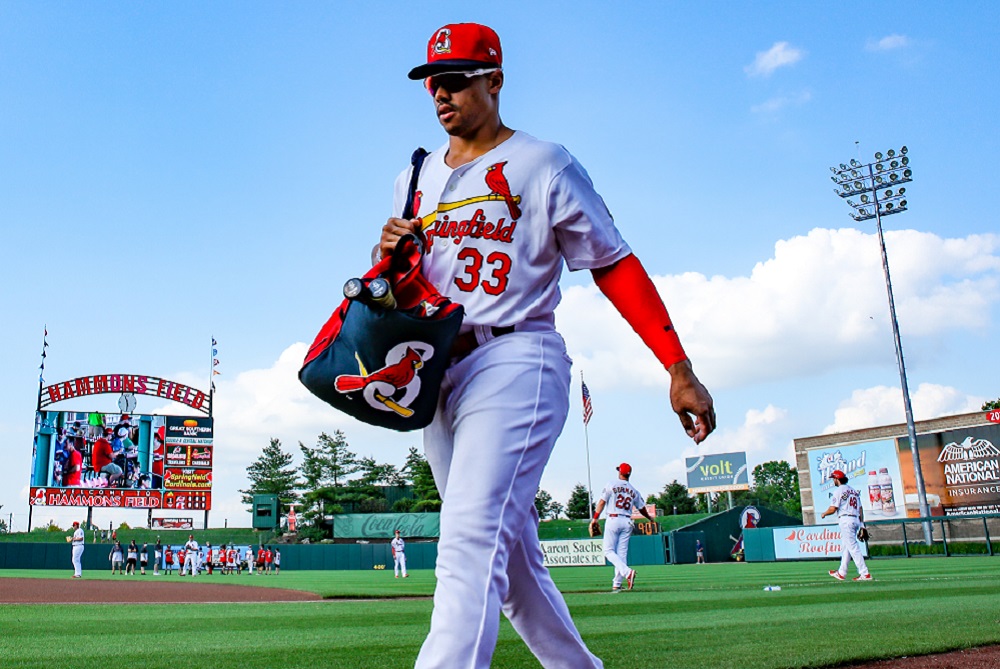
Michigan's Minor Leaguers Making Up for Lost Season
By
Steve Vedder
Special for MHSAA.com
June 28, 2021
Nick Plummer doesn’t necessarily view this summer as a make-or-break season, but he does realize the clock is ticking in his bid to make The Show.
Now in his fifth season in the St. Louis Cardinals chain, the former Bloomfield Hills Brother Rice star, like all minor league baseball players, suffered a setback when the 2020 minor league season was cancelled by the COVID-19 pandemic. While some were called into alternate-site camps during the abbreviated Major League Baseball season, the majority simply sat out a year. The loss means players this summer are scrambling to recapture lost momentum and get careers back on track.
 In a sport where development is the key to climbing the competitive minor league ladder, Plummer, one of a number of former Michigan high school standouts striving this summer in professional baseball, admits he needs to make significant progress playing for the Cards' Double-A affiliate in Springfield, Mo.
In a sport where development is the key to climbing the competitive minor league ladder, Plummer, one of a number of former Michigan high school standouts striving this summer in professional baseball, admits he needs to make significant progress playing for the Cards' Double-A affiliate in Springfield, Mo.
“Not playing in 2020 was a big deal for everyone,” said Plummer, the state’s 2016 Mr. Baseball Award honoree. “But I feel good about this season. Each year you need to develop and learn leadership and maturity.
“I worked on the mental side of baseball as well as working out (in Rochester). I tried to make the best of things, but it was tough.”
The season could mark a significant turning point in Plummer’s career. The center fielder had never hit over .228 during his four seasons, but is off to a quick start at Springfield, batting a career-high .283 with four home runs and 18 RBI over 145 at bats with a .386 on-base percentage.
Plummer, now 24, was drafted by the Cardinals in the first round, 23rd overall, during the 2015 amateur draft. He's part of an intriguing group of former Michigan prep stars trying to progress this summer.
South Haven’s Ryan Dorow is playing at Triple-A Round Rock in the Texas Rangers chain, located about 180 miles south of the parent club’s home in Arlington. A former baseball, basketball and soccer star in high school who helped those teams to a combined eight District championships, Dorow went on to become one of the greatest players in Michigan Intercollegiate Athletic Association history at Adrian College where he hit .395 with 95 extra base hits while driving in 188 runs over 179 career games.
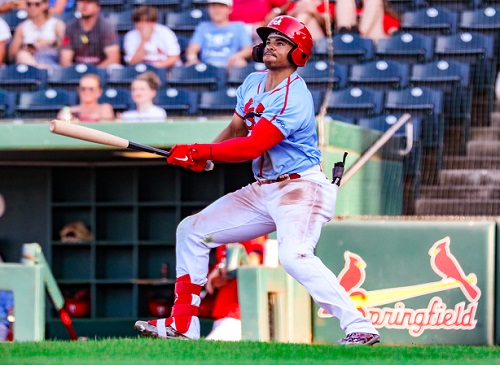 Dorow, a first-team all-MIAA pick all four seasons, said his goal is to simply improve each year as a pro. This season he’s hitting a combined .336 in 31 games across two levels, with six homers, 17 RBI and a .414 on-base percentage.
Dorow, a first-team all-MIAA pick all four seasons, said his goal is to simply improve each year as a pro. This season he’s hitting a combined .336 in 31 games across two levels, with six homers, 17 RBI and a .414 on-base percentage.
“You need to prove something to the organization and stay true to yourself,” said Dorow, who never hit less than .383 in any season at Adrian. “As a player you want to develop quickly, but everyone has their own timeline. You have to go out and have fun and improve.
“Coming out of high school and college, it was always in the back of my mind to play professional baseball, but you also have to understand that whatever happens, happens. I was just looking for another opportunity to play.”
Another former state prep star is making a radical switch in his opportunity in pro baseball. Grosse Pointe South’s Carmen Benedetti was the state’s 2013 Mr. Baseball, setting school records in average (.492), homers (22) and RBI (143). He became a 12th-round pick (367th overall) of the Houston Astros after batting .323 with 10 homers and 56 RBI in three years as a first baseman/outfielder at Michigan.
By his own admission, Benedetti, a three-time all-stater as a position player, was a less-than-stellar pitcher at South before throwing fewer than 30 innings for the Wolverines. But while an arm injury two years ago ended his hopes of playing in the field as a pro, the now 26-year-old Benedetti has turned to pitching this season with the High-A Ashville Tourists in North Carolina. He’s currently on the minor league injured list but was anticipating a mid-June return.
“Every year in baseball is a challenge, and I’ve just had to take (the switch) in stride,” said Benedetti, now in his fifth year in the Astros chain. “We all had 2020 off, and now we need to get the ball rolling. You still have to perform, and I’m going to do what I do. It’s a new road, but I feel like I’m lucky to get this far and now I’m just going to see another part of the game.”
Two more standouts who’ll be trying to make the most of their summers are brothers Chris and Mike Mokma of Holland Christian. Chris was taken in the 12th round of the 2019 draft by Miami while Mike – who threw a four-hitter with 14 strikeouts in an 8-5 win over Linden in the 2016 Division 2 championship game — signed as a free agent with the Los Angeles Dodgers after serving as the staff ace at Michigan State.
Mike is playing with the High-Class A Great Lakes Loons of the Midwest League. Chris is pitching with the Low-A Jupiter Hammerheads, who play in Palm Beach County, Fla., about 80 miles north of Miami. Chris has made eight starts, striking out 32 over just more than 41 innings. Mike started this season strong and is striking out a batter per inning over his first 10, all in relief, but has navigated some tough outings after returning from the injured list at the start of this month for the Midland-based Loons.
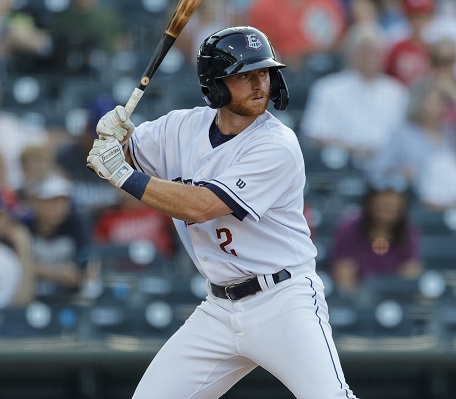 “The biggest goal is always development,” Chris Mokma said. “I’m still only 20, and it’ll be my first year of playing with older guys. I want to develop my pitching and my command and be able to throw any pitch in any count for a strike.
“The biggest goal is always development,” Chris Mokma said. “I’m still only 20, and it’ll be my first year of playing with older guys. I want to develop my pitching and my command and be able to throw any pitch in any count for a strike.
“Professional baseball has changed baseball for me a little, and now you’re just trying to evolve. If you pitch well, you move up. That’s still baseball. You can’t let the fun go away. At the end of the day you are playing a sport, but your goal is to get to the big leagues.”
There are several other former Michigan prep stars scattered throughout the minors this summer. Infielder Werner Blakely of Detroit Edison was taken in the fourth round (111th overall) of the 2020 draft by the Los Angeles Angels, the highest Detroit player taken since Northwestern’s Marc Washington was selected by the Tigers in the fourth round of the 1982 draft.
Blakely, who will play in the Arizona Rookie League in Tempe, was ranked as the country’s 260th best high school player by Perfect Game. The 6-foot-3, 180-pound shortstop batted .467 with five homers and 38 RBI in 96 at-bats his junior year before losing his senior year to COVID.
Also among notable Michigan players in the minors are five from the 2015 and 2016 Michigan High School Baseball Coaches Association Dream Teams, including four pitchers who helped the Wolverines to the 2019 College World Series finals. Tommy Henry (Portage Northern), Karl Kauffman (Bloomfield Hills Brother Rice), Jeff Criswell (Portage Central) and Jack Weisenburger (Rockford) are all in pro ball.
Oakland took Criswell in the second round (58th overall) of the 2020 draft after Weisenburger was taken by the A’s in the 20th round the year before. Criswell has made one scoreless two-inning appearance for High-A Lansing (Mich.) and is on the injured list, while Weisenburger is 1-1 with a 2.53 ERA and 35 strikeouts over 21 1/3 relief innings at Double-A Midland in Texas.
Henry was the 74th player taken in the 2019 draft and pitching for the Double-A Amarillo Sod Poodles (Texas) of the Arizona Diamondbacks organization; he’s 1-3 in 10 starts with a 4.93 ERA and 59 strikeouts over just under 46 innings pitched this season. Kauffman was the 77th overall pick in the same draft by the Colorado Rockies. He is pitching for the Hartford Yard Goats (Conn.) in Double-A, where he’s made nine starts.
Also on the Wolverines’ World Series club was outfielder Jordan Nwogu, previously a second-team all-stater from Ann Arbor Pioneer who was taken by the Chicago Cubs in the third round (88th overall) of the 2019 draft. He’s playing with the Low-A Myrtle Beach Pelicans (S.C.) and is off to a slow start at the plate but has stolen six bases.
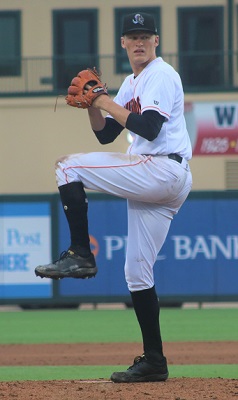
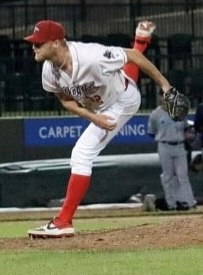 Hamilton’s Grant Wolfram was nabbed by Texas in the 18th round of the 2018 draft. A pitcher, Wolfram will be spending his fourth year in pro ball with the High-A Hickory Crawdads (N.C.). He won 19 games with Davenport University and later pitched at Central Michigan. As a high school tennis player at Hamilton, Wolfram was 30-1 as a senior and named all-state. In all, he earned 10 varsity letters in tennis, basketball and baseball. He’s made eight starts with 43 strikeouts over just less than 31 innings pitched.
Hamilton’s Grant Wolfram was nabbed by Texas in the 18th round of the 2018 draft. A pitcher, Wolfram will be spending his fourth year in pro ball with the High-A Hickory Crawdads (N.C.). He won 19 games with Davenport University and later pitched at Central Michigan. As a high school tennis player at Hamilton, Wolfram was 30-1 as a senior and named all-state. In all, he earned 10 varsity letters in tennis, basketball and baseball. He’s made eight starts with 43 strikeouts over just less than 31 innings pitched.
Pitcher Garrett Schilling had a remarkable prep career at Bishop Foley and also is playing this summer in Double-A with Hartford after being taken in the 18th round of the 2017 draft by Colorado. Schilling was an outstanding three-sport star in high school; he amassed a 36-0 record as a pitcher, was a two-year letter winner in hockey and made 7-of-11 field goal attempts as a kicker on the football team.
He helped Bishop Foley to three Division 3 baseball championships over his first three seasons from 2011-13 and a combined 146-12-1 record over four years until a line drive off his face at the end of his senior spring required season-ending surgery. Schilling went a combined 4-for-9 with five RBI in Finals wins over Bridgman, Lansing Catholic and Grandville Calvin Christian.
He wound up attending Xavier where he went from pitching seven innings as a freshman to earning 14 saves with a 1.91 ERA as a sophomore, to 15 starts and a 6-4 record and 3.57 ERA his junior year. He was a two-time all-Big East second-team selection. Schilling is carrying a 4.63 ERA with nearly a strikeout per inning in nine starts.
Sam Weatherly of Howell is pitching for the Low-Class A Fresno Grizzlies (Calif.). A first team all-stater in 2016, Weatherly was taken by Colorado in the third round (81st overall) of the 2020 draft after pitching collegiately at Clemson. He’s 2-3 with a 4.38 ERA – with 61 strikeouts in 37 innings pitched – over nine starts this season.
Former Detroit U-D Jesuit and U-M catcher Harrison Wenson is playing for his third minor league team and second organization this season, having begun in the Angels system, receiving his release from High-A Tri-City (Wash.) and signing with the Cubs’ High-A in South Bend, Ind.
A rare three-time draftee, Wenson was selected by the Tigers in the 38th round in 2013, in the 39th round by Pittsburgh three years later and then by the Angels in the 24th round of the 2017 draft. He was a member of the MHSBCA’s Dream Team as a junior and senior.
PHOTOS: (Top) Former Brother Rice standout Nick Plummer hauls his gear at Hammons Field in Springfield, Mo., as a member of the Double-A Cardinals this season. (2) Plummer follows one of his drives. (3) South Haven’s Ryan Dorow awaits a pitch for his Triple-A team in the Texas Rangers chain. (4) Holland Christian’s Chris Mokma begins his delivery for the Jupiter Hammerheads. (5) Brother Mike Mokma fires a pitch for the Great Lakes Loons. (Photos courtesy of the Springfield Cardinals, Round Rock Express, Jupiter Hammerheads and the Mokma family.)

'Over Here,' Athletes Gave to WWI Effort
March 28, 2018
By Ron Pesch
Special for Second Half
In a nation at war, the needs of many outweigh the desires of a few.
Among the many noble sacrifices for the greater good was Michigan’s spring high school sports season of 1918.
The United States’ entry into “The Great War” (today commonly known as World War I) came on April 6, 1917, 2½ years after the war had begun. First elected President of the United States in 1912, Woodrow Wilson earned re-election in 1916 under a platform to keep the U.S. out of the war in Europe. The sinking of the British passenger ships Arabic and Lusitania in 1915 caused the death of 131 America citizens, but did not invoke entry into the conflict. However, continued aggressive German actions forced a reversal in policy.
“The present German submarine warfare against commerce is a warfare against mankind,” stated Wilson in an April 2 special session of Congress, in requesting action to enter the war.
A huge baseball fan, President Wilson recognized the value of entertainment and athletics during a time of crisis. Major league baseball, America’s pastime, completed a full schedule in 1917. A former president at Princeton University, on May 21, 1917, Wilson addressed the value of school athletics in a letter to the New York Evening Post.
 “I would be sincerely sorry to see the men and boys in our colleges and schools give up their athletic sports and I hope most sincerely that the normal courses of college sports will be continued so far as possible, not only to afford a diversion to the American people in the days to come when we shall no doubt have our share of mental depression, but as a real contribution to the national defense. Our young men must be made physically fit in order that later they may take the place of those who are now of military age and exhibit the vigor and alertness which we are proud to believe to be characteristic of our young men.”
“I would be sincerely sorry to see the men and boys in our colleges and schools give up their athletic sports and I hope most sincerely that the normal courses of college sports will be continued so far as possible, not only to afford a diversion to the American people in the days to come when we shall no doubt have our share of mental depression, but as a real contribution to the national defense. Our young men must be made physically fit in order that later they may take the place of those who are now of military age and exhibit the vigor and alertness which we are proud to believe to be characteristic of our young men.”
Despite the highest of hopes, the requirements and realities of war deeply impacted life in the U.S. soon after.
In February of 1918, a proposal was circulated by Dr. John Remsen Bishop, principal of Detroit Eastern High School and president of the Michigan Interscholastic Athletic Association, to abolish spring athletics at Michigan high schools. Due to a labor shortage brought on by the war, the states, including Michigan, needed help on farms, harvesting crops from spring until late fall. The action might also affect the football season of 1918.
The Boys’ Working Reserve, a branch of the U.S. Department of Labor, was organized in the spring of 1917 and designed to tap into an underutilized resource to help address that labor deficiency. “Its object was the organization of the boy-power of the nation for work on the farms during the school vacation months.”
While the idea was popular among schools around Detroit, due to the lack of public commentary from outstate school administration, it was expected that the proposal would meet at least some opposition when the M.I.A.A. gathered on Thursday, March 28 in Ann Arbor during a meeting of the state’s Schoolmasters Club.
Less than two weeks prior to the March meeting, Michigan Agricultural College made an announcement that would impact one aspect of the coming spring sports season.
“The department of athletics of the Michigan Agricultural College begs to inform the high schools of the state that plans for the annual interscholastic track meet, which was to have been conducted here in June, have been given up this year – not through any desire on the part of this department to discourage athletics, but because this is a time when we can and should devote our resources to better uses,” said coach Chester L. Brewer of the Aggies to the Lansing State Journal. “It would hardly be sound judgment for us to make our usual elaborate plans for this meet while our government is appealing to all of us to economize and exercise the utmost thrift. Neither is it wise policy to encourage unnecessary traveling upon the railroads, or to ask high schools of the state to make any expenditures other than those which are absolutely necessary.”
Earlier in the year, similar news had come from the University of Michigan.
In January of 1917, the University of Michigan had announced plans for an elaborate annual high school basketball invitational, designed to identify a Class A state champion. Billed as the “First Annual Interscholastic Basket Ball Tournament,” the March event hosted 38 teams. However, influenced by the war, a decision had been made not to run a second tournament in 1918. Instead, on March 27, Kalamazoo Central and Detroit Central, two of the state’s top teams, were invited to Ann Arbor for a hastily arranged contest at U-M’s Waterman Gymnasium. The schools had split a two-game series during the regular season. Kalamazoo won the season’s third matchup, and while not official, declared itself 1918 Michigan state champion.
Into this environment of patriotism and uncertainty, school administrators arrived in Ann Arbor for the Schoolmasters gathering. There, in the morning, the membership heard a presentation from H. W. Wells, assistant and first director of the Boys’ Working Reserve. “The heart of the nation, rather than the hearts of the nation, is beginning to beat. War is making us a unit,” said Wells, discussing the aim to recruit boys between the ages of 16 and 21 to help provide food for the allies in Europe and at home in the United States.
 “Wells told of the need for the farmers to sow more wheat, and plant more corn,” reported the Ann Arbor News, “and in the same breath he told of great corn fields all over the country, where last year’s corn still lay unhusked, because of a lack of farm labor.”
“Wells told of the need for the farmers to sow more wheat, and plant more corn,” reported the Ann Arbor News, “and in the same breath he told of great corn fields all over the country, where last year’s corn still lay unhusked, because of a lack of farm labor.”
It was estimated that 25 percent of the nation’s farm workforce was now active in the armed forces.
The proposition was brought to the M.I.A.A. by Lewis L. Forsythe, principal at Ann Arbor High School, who would soon establish himself as a guiding force in high school athletics. The proposal “was discussed thoroughly.”
“This session is usually a stormy one, because of contentions that arise over rulings that affect schools in different ways,” said Adrian superintendent Carl H. Griffey to the Adrian Daily Telegram, “but this meeting was a serious one in which all matters were related to our national welfare and passed by unanimous votes.”
So, one day after the conclusion of the abbreviated state basketball championship contest, the spring prep sports season in Michigan came to an abrupt halt. Michigan’s male high school students were asked to work to support the war effort.
“Chances are that they will remain there for the duration of the war,” stated the Lansing State Journal in response to the action. “At the meeting … it was talked of quitting football because of the need of the boys staying on the farms till the latter part of November. This is highly probable. If it is passed upon then Michigan high schools will have but one sport, basketball.
“Whether intra-mural sports will replace the representative teams is not known. This form of athletics demands the attention of a great number of teachers to tutor the different class organizations. The teachers are taxed to the limit at present and cannot give the time to sports. Organizing farm classes and Liberty bond teams is taking the teacher’s spare moments. … But still athletics are needed, as the war has demonstrated, and physical training should be instituted from the kindergarten to the university.“
“Those lads who leave for the farms the first of May,” wrote the Port Huron Times-Herald, “will be in better condition when they return home from the fields and cow lanes than they would (have) had they remained in the city until June batting the leather pill.”
The fate of the 1918 football season would not be known until late August.
In late June, the 29th Governor of Michigan, Albert E. Sleeper, thanked the estimated 8,000 students who had joined the ranks.
 “To you soldiers of the soil I would say this, that I am as proud to address you as I would be to address any of the boys who are bearing arms for their country. You have proved that you are true patriots, for you have started out to do exactly what your country has asked you to do – the thing which you can do best for your country at this time.
“To you soldiers of the soil I would say this, that I am as proud to address you as I would be to address any of the boys who are bearing arms for their country. You have proved that you are true patriots, for you have started out to do exactly what your country has asked you to do – the thing which you can do best for your country at this time.
“Every day, in the rush of official work, I think of you Reservists as you work on the farms, just as I think of our soldiers who are in training camps or ‘over there.’ And I am just as proud of you as I am of them. So are all the people of Michigan.”
It was estimated “the boys who last spring left their high school studies and as members of the United States Boys’ Reserve have helped the Michigan division to add $7,000,000 to the food production of the nation.”
In September, Byron J. Rivett, secretary of the M.I.A.A., announced that, based on a vote of member high schools, prep sports would be resumed in the fall. The Detroit News celebrated the news that “moleskins and pigskins will be in evidence and the grand old game will be a part of the autumn’s entertainment.”
In October, in Grand Rapids and Detroit and other cities across the state, officials gathered to honor those who served as part of the “Michigan Division of the Reserve” and to award bronze badges in recognition for their contribution to the war effort.
World War I officially ended on November 11 with the signing of the armistice. Armistice Day, today known as Veteran’s Day, was first celebrated in 1919. In total, an estimated 16 million were killed during the war.
“Four million ‘Doughboys’ had served in the United States Army with the American Expeditionary Forces (AEF). Half of those participated overseas,” said Mitchell Yockelson in Prologue magazine, a publication of the National Archive. “Although the United States participated in the conflict for less than two years, it was a costly event. More than 100,000 Americans lost their lives during this period.”
More than 5,000 of those casualties had come from Michigan.
***
 To the surprise of the world, a second war arrived in 1918. This one did not discriminate based on geographic or political borders. It would take more lives than World War I.
To the surprise of the world, a second war arrived in 1918. This one did not discriminate based on geographic or political borders. It would take more lives than World War I.
Globally, the Spanish Flu pandemic arrived in three waves, one in the spring, one in the fall of 1918, and a third arriving in the winter of 1919 and ending in the spring. It, too, would impact high school and college athletics in Michigan and beyond, as countless football games across the nation were cancelled in an attempt to help reduce the spread of the disease.
In the end, an estimated 675,000 would die in the United States from the virus. In Michigan, hundreds succumbed in October 1918 alone. In Detroit, between the beginning of October and the end of November, “there were 18,066 cases of influenza reported to Detroit’s Department of Health. Of these, 1,688 died from influenza or its complications.” Worldwide, an estimated 50 million were killed by the Influenza pandemic of 1918-1919.
 Ron Pesch has taken an active role in researching the history of MHSAA events since 1985 and began writing for MHSAA Finals programs in 1986, adding additional features and "flashbacks" in 1992. He inherited the title of MHSAA historian from the late Dick Kishpaugh following the 1993-94 school year, and resides in Muskegon. Contact him at [email protected] with ideas for historical articles.
Ron Pesch has taken an active role in researching the history of MHSAA events since 1985 and began writing for MHSAA Finals programs in 1986, adding additional features and "flashbacks" in 1992. He inherited the title of MHSAA historian from the late Dick Kishpaugh following the 1993-94 school year, and resides in Muskegon. Contact him at [email protected] with ideas for historical articles.
PHOTOS: (Top) The U.S. Department of Labor recruited high school students to work on farms as soldiers went oversees to fight World War I. (Middle top) A Working Reserve badge. (Middle) Lewis L. Forsythe. (Below) Another recruitment poster for the Working Reserve shows a man plowing a field while war rages in the background. (Photos collected by Ron Pesch.)

